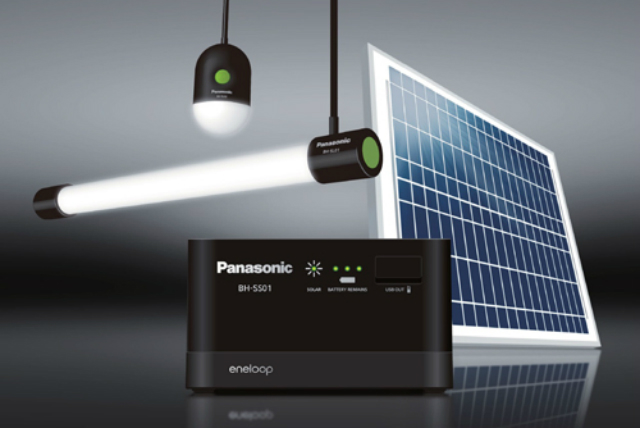
In an effort to help give people more access, Panasonic developed the eneloop solar storage, a power-storage system that powers LED lights and small devices like cell phones in areas — such as regions of Asia and Africa — where electricity is scarce. These are exactly the places Panasonic plans to ship the device, starting in November, with Ethiopia, Tanzania, Indonesia, Thailand, Myanmar, and other countries on the list of countries Panasonic expects to target. Right now, many households in these regions use kerosene lamps for nighttime lighting, which are expensive to use (often taking up 30 percent of a family’s income), hazardous, and a source of dangerous fumes.
When it’s sunny, solar cells generate power, which is then stored in a nickel-metal hydride battery unit. Families can then draw on the power at night for lighting or other electronics, like TVs or heaters. It should take the battery five hours to go from depleted to fully charged on a sunny day. The eneloop also has a USB slot for phones. The dust- and rain-resistant device also has two types of LED lamps, a 1.5-watt bulb, and a 5-watt straight tube, and is expected to last five years.
To get the device into the hands of people who need it, the eneloop will be marketed through existing sales dealers, as well as NPOs and NGOs that specialize in bringing electricity to those living without it. It’s targeted not only at homes but at hospitals, schools, and stores as well.


